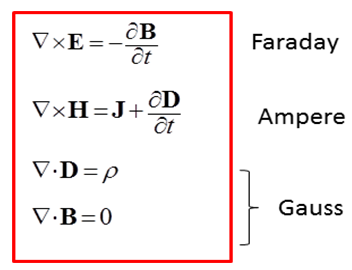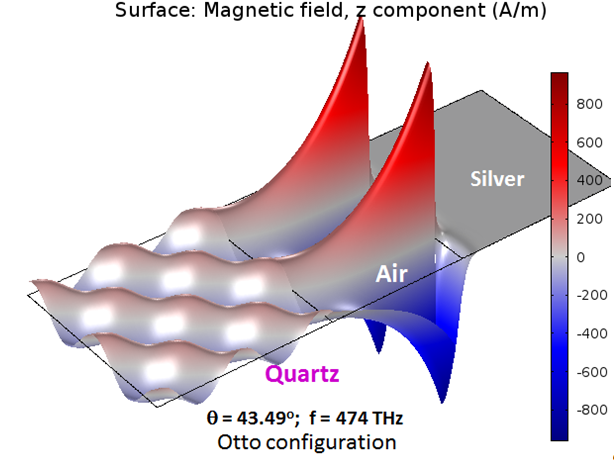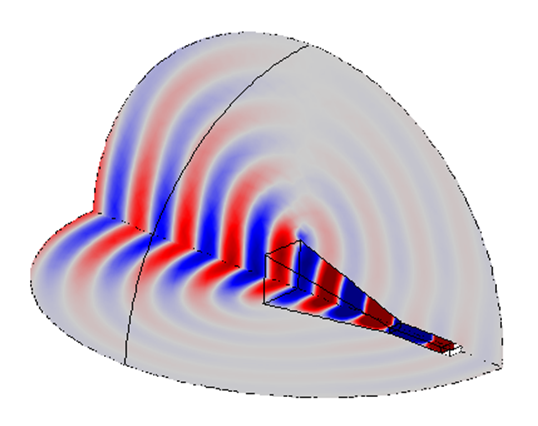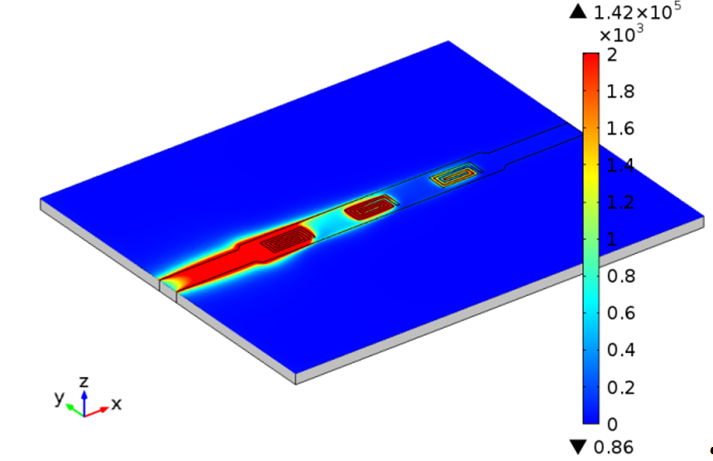Generation, propagation, interaction with physical objects, the surrounding environment, electrically charged particles and components of electric and magnetic fields are described by Maxwell's equations:
Together with the Lorentz force law, these equations form the foundation of electrodynamics, optics and electric circuits thus underlying modern electrical and communications technologies. Maxwell’s equations are linear under specific circumstances but for more realistic applications are non-linear and need more complex approaches to solve.
Many real-world problems such as scattering, radiation, waveguides etc., require computational techniques to conduct electromagnetic simulation and modeling that computes the E (Electric), and H (Magnetic) fields because of the irregular geometries found in devices. Thus computational simulation is important to the design of antenna, radar, satellite and general communication systems, photonic devices and high speed electronics, medical imaging, cell-phone antenna design, and many other applications that cover the frequency spectrum.
The main areas of application for electromagnetic simulation are:
- Wave propagation: Electromagnetic waves contain an electric and magnetic component and can propagate in homogeneous materials, polarized media and negative refractive index materials; complex wave propagation may also exist at the interfaces between materials, see below:
- Waveguides: The design depends on the frequency band, wave power and transmission losses: coaxial cables are used for RF components but dielectric waveguides are required for waves operating at optical or infra-red frequencies. Analysis uses the Helmholtz equations that place constraints on the modes of propagation; in coaxial lines any transverse electromagnetic wave can propagate whereas in hollow metallic waveguides only certain modes propagate.
- Antenna: The localized variation of the electromagnetic wave allows either transmission or reception through an arrangement of metallic conductors. Alternatively antennas can produce uniform distributions of electromagnetic fields but the oscillating fields may have unintended consequences on metallic objects placed within the field.
- Scattering and absorption: Maxwell’s equations can provide details of the absorption, scattering, extinction, pressure cross-sections, back-scattering and radiation force exerted on the particle by an incident EM wave. EM waves may cause oscillation of particles and the energy is then scattered or they may absorb radiation and transform the incident energy into other forms.
- Microwave filters: Compact wireless systems with high data transmission rates integrate multiple filters that occupy minimal volume. Designs with specific passband frequencies and quality factors can be designed within required geometrical and topological constraints.
- EM forces: Induced Lorentz forces can be high enough to rapidly accelerate conductive material and can provide metal forming and joining operations as well as being the basis for electromagnetic rail gun launch systems.
By carefully integrating computational electromagnetic simulation and modeling into the early stage of product design AltaSim has helped its clients to achieve optimum performance in both high and low power electromagnetic applications such as:
- Radio frequency
- EM forming/joining
- Photonics
- Optics
- Microwaves
In addition, AltaSim also provides a comprehensive range of training on computational electromagnetic simulation with the following courses:
Need Help with Electromagnetic Analysis?
Contact us about our Electromagnetic Analysis technology services.





